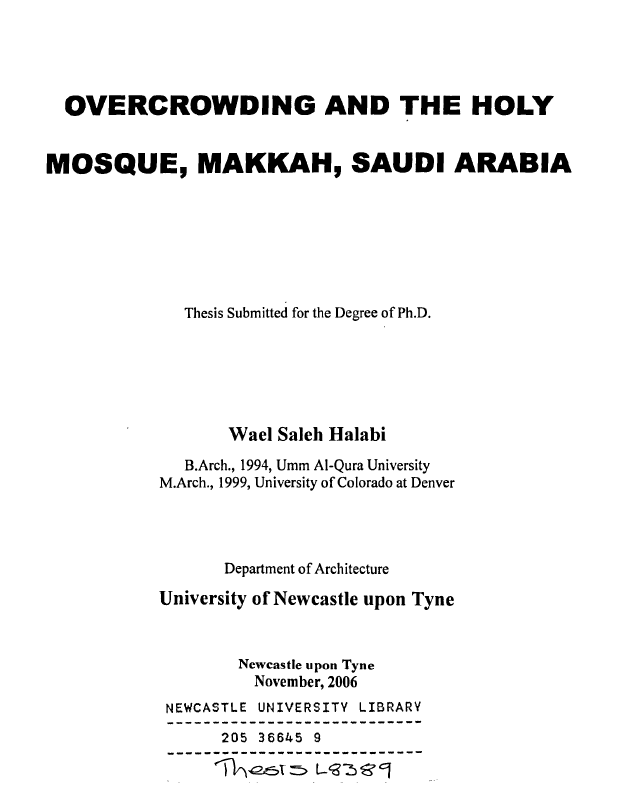
The Holy Mosque in Makkah determines the direction in which all Muslims face five times daily in their “obligatory prayers. ” In addition, millions of Muslims visit this site annually as the culmination of their religious life; it is obligatory for every Muslim to visit the Holy Lands as a lifetime journey. Therefore, people of different nationalities and cultures mix continuously in this unique place. The large number of people who would occupy the Holy Mosque building at the same time, however, causes overcrowding since some activities can only be performed in particular places in this building, and in a specific sequence. … This thesis holds that this traditional practice is no longer a feasible option as the building has reached vast proportions that challenge the natural physical boundaries of the site; understanding and managing the overcrowding problem in a sensible manner is the most appropriate solution…. However, the study has a broader significance. It enquired into the general social and cultural aspects of human behaviour within architectural settings that are dedicated to a special function. Another research theme relates to the physical standards required for the movement of large crowds within confined spaces…. It was found that while the overcrowding problems that occur at some of the Holy Mosque gates and at places inside the building depend on the time of the year. This overcrowding is strongly affected by worshippers’ behaviour. According to American and British design standards, the current overcrowding situation at the Holy Mosque falls into the “Level of Service F” category in general, and worse than that in specific cases, which means that it is dangerously overcrowded. The study goes on to argue that the mosque as a building type ought to have official design standards that would ensure the optimal conditions for safe religious practice by taking account of human behaviour in crowded conditions. The study also draws on a brief strategic plan that should be developed and followed in order to resolve the overcrowding problem at the Holy Mosque.
Halabi, S. H., ‘Overcrowding and the Holy Mosque, Makkah, Saudi Arabia’ (Unpublished doctoral thesis: Newcastle University, 2006).
I agree to the terms outlined below:
You agree to upload and assign Mosqpedia Database the rights to use the content worldwide and in perpetuity across all current and future media platforms. Mosqpedia Database may edit, copy, adapt and translate your contribution.
The content will be distributed under the Creative Commons Attribution-Deed – Attribution-NonCommercial-NoDerivatives 4.0 International – Creative Commons
All data will be stored in line with data protection regulations.